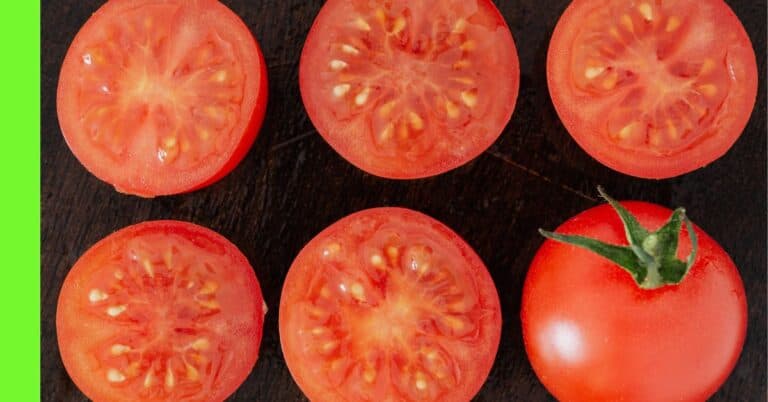Food Processing: Is There A Market For It In Nigeria

What is Food Processing?
According to Britannica, food processing typically refers to the fundamental food preparation,
the transformation of a food product into a different form (such as the creation of preserves from fruit), and preservation and packing methods.
Food processing is any of a number of procedures used to prepare raw foods for consumption, preparation, or storage.
Food processing has a huge range of applications and is crucial,
a variety of techniques come into place to produce various outcomes.
- Canning,
- freezing,
- dehydration,
- pickling,
- and irradiation
are a few of the processing and preservation techniques that’s applied on food.
Importance of Food Processing
Ever wondered why we process food?
Let’s work through some of the importance.
1. Food processing extends the shelf life of food in many ways, this includes
microbe control, low-temperature storage, dehy1dration and oxygen removal.
To appeal to customers, it also modifies the nutritional content, flavor and texture of food items.
Food processing is a technology that also promotes food diversity for consumers by giving them more options.
The main goal of food processing is to extend the product’s shelf life and so assure food safety.
The bacteria that cause food deterioration and/or foodborne illnesses become inactive or have their development inhibited by a variety of methods (such as heating, drying, canning, freezing, etc.).
2. Maintaining a product’s quality and stability is another important factor.
For instance, following extraction, fresh juice is quickly phase-separated, and enzymes start to break down essential ingredients like antioxidants.
The rate of juice deterioration slows down by pasteurisation (heating-treating) the juice to inactivate these enzymes.
This is true for items that include a lot of fat as well since fats can rapidly turn rancid when oxygen and active enzymes are present.
3. To fulfill the needs of our mobile lifestyle, processing broadens the selection of food items available to consumers and makes them more convenient.
4. Food processing is crucial to maintaining food affordability.
5. Prevent food-contamination.
Methods of Food Processing
From the potential for a pest or bacterium to infiltrate and reproduce on foods to the biological activity of foods,
There are many criteria put together for the optimal processing of food.
See the following techniques used to properly digest food:
- Peeling off the outer layers of the raw materials.
- Chopping or slicing
- Mincing
- Liquefaction
- Fermentation
- Emulsification
- Cooking
- Mixing
- Gasification such as the addition of a gas in bread or soft drinks.
- Proofing
- Spray drying
- Pasteurization
- Packaging
Food Processing in Nigeria
Nigeria, with a population of over 200 million people and a growth rate of 3% yearly, is the largest market in sub-Saharan Africa.
With its enormous population, Nigeria offers a robust and alluring retail food industry.
The bulk of Nigeria’s population consumes traditional foods such as
- corn,
- cassava,
- rice,
- sorghum,
- beans,
- vegetables,
- tubers,
- and shellfish (fish),
most of which are not processed or just minimally processed.
However, shifting demographics and lifestyles are making a variety of convenience, processed, and packaged meals as well as nutrient-dense foods more popular with consumers.
This helps Nigeria’s retail food sector to grow, and as a result, food processing and packaging have emerged as profitable ventures for both domestic and international markets.
Nigeria has fully set up food institutes and regulatory bodies that control the activities in this sector.
Types of Food Processing
Food processing includes every step used to prepare food from the moment it’s collected until it’s placed on the plate of the customer.
Foods processed are in three categories, namely Primary, Secondary, and Tertiary, according to the FAO (Food and Agriculture Organization).
Primary Processing: Basic cleaning, grading, and packing are all part of the main processing, much like with fruits and vegetables.
Secondary Processing: As in the instance of milling paddy into rice, secondary processing entails changing the raw material up to the final preparation.
Tertiary Processing: A high value-added ready-to-eat food, such as bakery items, quick meals, health drinks, etc., is produced through tertiary processing.
Agricultural Processing in Nigeria
Nigeria is presently the largest food market in Africa, according to the World Trade Organization, thanks to massive investment in the domestic sector and high import levels.
According to estimates, the food and beverage industry accounts for 4.6% of the nation’s GDP and 22.5% of the value of manufacturing.
Agricultural Processing
After the crop production, agricultural processing occurs.
A simple definition of agricultural processing is the conversion of raw agricultural materials into other usable goods.
The main goal of processing is to maintain or increase the quality of agricultural goods, hence reducing losses.
Agricultural goods that have undergone processing are either stored or consumed.
Cassava
Cassava is one of the agricultural products that Nigeria processes.
It is a root crop that’s used to make:
- garri,
- fufu,
- flour,
- starch,
- animal feeds,
- chips,
- and pellets.
These goods each have their own unit operations.
For instance, peeling, washing, grinding, pressing/fermenting, sifting, frying, and drying are the unit activities for garri.
Rice
Nigerians eat rice as a staple dish.
Given the great amount of fertile land in the southern and central regions of the nation, its production has a huge potential.
Threshing, cleaning, grading, parboiling, soaking, steaming, drying, milling, destoning, size grading, and bagging are the unit processes involved in processing rice.
Palm Oil
In the eastern region of Nigeria, palm oil is among the most significant crops.
The final products of its processing include cake, shell, briquettes, palm oil, palm kernel oil, and palm oil.
Sterilization, digestion, pressing, clarifying, drying, kernel breaking, separation, crushing, pressing, and refining are some of the unit activities.
Soy Beans
In addition, since the 1980s, soy has become more popular as a source of protein and fat, not merely for the oil made from it but also for the milk.
Products made from soybeans include soy milk, soy yogurt, soy oil, and cake.
Groundnut
The most significant crop in northern Nigeria is groundnut.
The fourth-largest producer of groundnuts in the world is Nigeria.
From groundnuts come groundnut oil and cake.
Groundnut processing includes the unit processes of stripping, decorticating, roasting, grinding or milling, pressing, and refining.
Processing Livestock in Nigeria
Livestock
Cattle, goats, sheep, and pigs are examples of livestock products.
Livestock processing includes killing animals, chopping the meat, evaluating it to make sure it’s safe to eat, packing it, turning it into lunch meats or sausages, distributing it to retailers, and charging consumers for it.
The Fulani cattle rearers, who are widespread in the northern region of Nigeria,
For the meat and dairy industries, cattle’s are produced.
The leather and shoe industries further process the cattle’s skins to create hide and skin.
Abattoirs are where meat is killed locally.
Before storage or sales, they perform unit procedures such as slaughtering, washing, and cutting (FDL, 2007).
Poultry
Raising poultry birds mainly for the meat and eggs. Before it’s stored, poultry meat is prepared through slaughter, defeathering, and chopping.
One of the agricultural sub sector’s fastest-growing sectors in Nigeria is the poultry business.
Snail
Processing of snails is a novel field that needs investigation as a source of income.
Technology and manufacture are both rather recent.
According to Cobbinah (2011), there is a critical need for knowledge on the biology, genetics, dietary needs and general husbandry of snails due to the rising popularity of farming.
Economic Overview of the Food Processing Industry in Nigeria
Nigeria’s food processing sub-sector is responsible for at least half of all manufacturing jobs.
Crop production in Nigeria accounts for 88% of the total agricultural industry size.
It is the primary driver of agrarian sector output, contributing an average of 90% to the overall agricultural sector output between 2012 and 2018, and growing at a CAGR of 3.6% over the same period.
Crop production includes the production of cash crops (cocoa, groundnut etc.) and staple foods (Rice, Maize and Cassava) in a landmass of 82.0 million hectares out of the total landmass of 92.4 million hectares.
Nigeria is the largest producer of cassava, yam and cow pea in the world. Other significant crops include groundnut, palm oil and cocoa.
For meat in particular, 1.19 trillion Naira was expended on meat in 2019 and total meat production in 2018 reached 1,451,207 tonnes, representing an annual growth rate of 2.79%.
The country’s processed food industry is expected to grow by several tens of billions of dollars by 2050.
Where do you see the food processing industry in Nigeria in the next few years?
REFERENCES
https://www.ift.org/news-and-publications/food-technology-magazine/issues/2020/march/
https://www.futurelearn.com/info/courses/how-is-my-food-made
https://www.premiumtimesng.com/agriculture/agric-news
https://www.flandersinvestmentandtrade.com/export/sites/trade/files/market_studies








